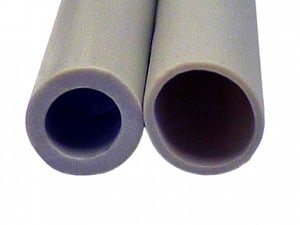Learn about the most common types of wire jacketing, the benefits of each, and which will be ideal for your product.
There are so many options when Choosing Cable Assembly Jacketing Material that finding jacketing materials for your custom cable assemblies, wires, and cables can be an exhasutive and daunting task. If you don’t know the jacketing material is what covers the conductor and insulation used in your custom wiring project. This outer covering will be used to protect your wiring from moisture, chemicals, UV rays, temperature extremes, or any other harsh conditions that your assembly may encounter. For this product to be as effective as possible, it’s crucial that you discuss the product’s specifics and environment with your manufacturer and their engineers before settling on a final product. Because of the specific nature of this product, it’s important to work with a designer who is willing to manufacture prototypes of your product to ensure that everything will run smoothly when you begin manufacturing on a large scale. Finding a cable extruder who is willing to make small cable runs is critical to help control development costs.
Here are three common cable assembly jacketing materials that we use and the pros and cons of each:
Polyvinyl chloride, or PVC as most of us know it by, is often used because of its low cost and adequate durability for many uses. This makes it great for cords that need to withstand the wear and tear that comes with average users and moderate daily use. This type of jacketing can also be formulated to resist UV rays, making it a possible jacketing material for cable assemblies that will be housed outside.
A downside of this material is that while it can withstand temperatures ranging from -20°C to 105°C, it is not ideal for situations that require high heat or extreme wear. This type of jacketing works best in environments where the cable is not exposed to extreme conditions.
Thermoplastic Elastomer, or TPE, can handle a broader range of temperatures than PVC can. This makes it the preferable choice of jacketing for a wider range of temperature extremes than PVC. Its ability to withstand temperatures ranging from -50°C to 105°C make it perfect for projects that need to withstand a variety of temperatures without becoming brittle or cracking. It also has a high modulus of elasticity, making it a great choice where high flexibility is needed or wear may occur – it thus makes a wonderful coil cord.
This type of material is typically easier to produce than natural rubber as it requires fewer steps to process. This can reduce the time it takes to produce, speeding up the manufacturing process. This material can have a high shrink rate and surface friction though, so it is important that the cable is designed properly to ensure that these properties do not adversely affect the final product. To avoid this, it’s important that your cable manufacturer produces prototypes first to ensure that the final cured product will be the correct size.
Polytetrafluoroethylene, or PTFE, is often referred to as Teflon® as a registered trademark of Chemours. This material can handle extreme temperatures, as low as -200⁰C to 260⁰C. It also has excellent flexibility, abrasion resistance, and chemical resistance. Because of these properties, and because it has the highest cost of the materials listed here, PTFE is best used when the cable will experience very extreme conditions.
Choosing Cable Assembly Jacketing Material
These are just a few of the jacketing materials that your custom cable assembly manufacturer may choose to utilize based on the customer’s needs, the manufacturer’s cable experience, and the industries that they typically operate in. All of the materials covered in today’s post are thermoplastics, if these materials don’t seem like they would be able to meet your product’s needs, it’s important to understand that there is an abundance of additional jacketing options that might be more effective for your product.
Need help when Choosing Cable Assembly Jacketing Material for your next project? Our engineers and designers have years of experience with cabling and manufacturing products in a variety of industries, ranging from the medical industry to telecommunications, and are happy to help!
